dances we teach
At S Style Dance Team we specialize in ballroom, latin, and social dances. We teach multiple dance styles that you can dance at social events, weddings, night clubs, parties, and competitions.

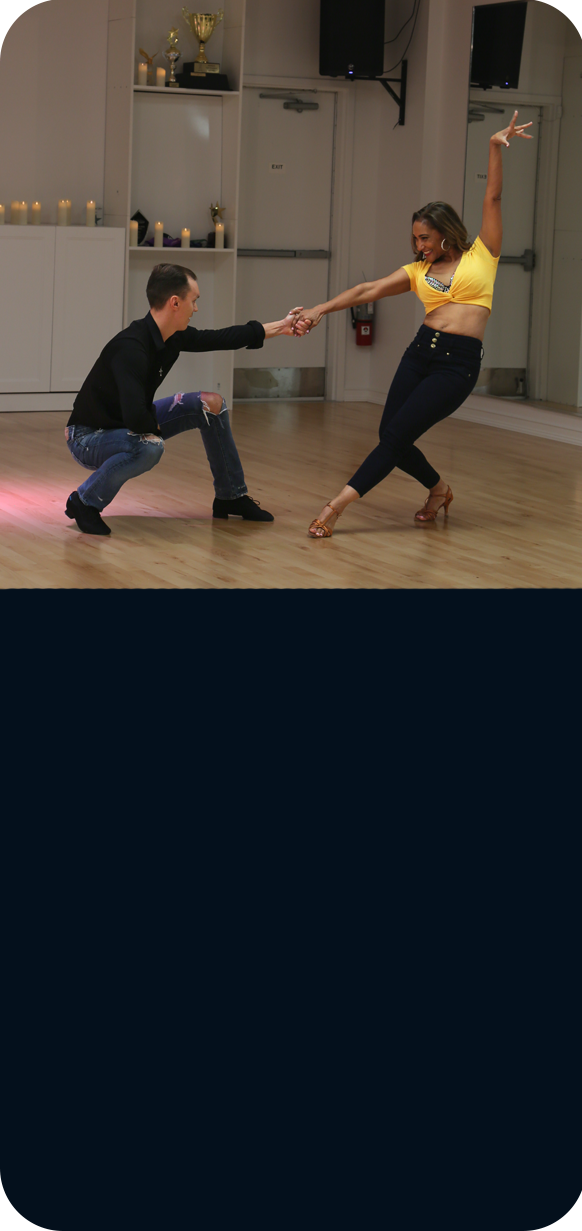

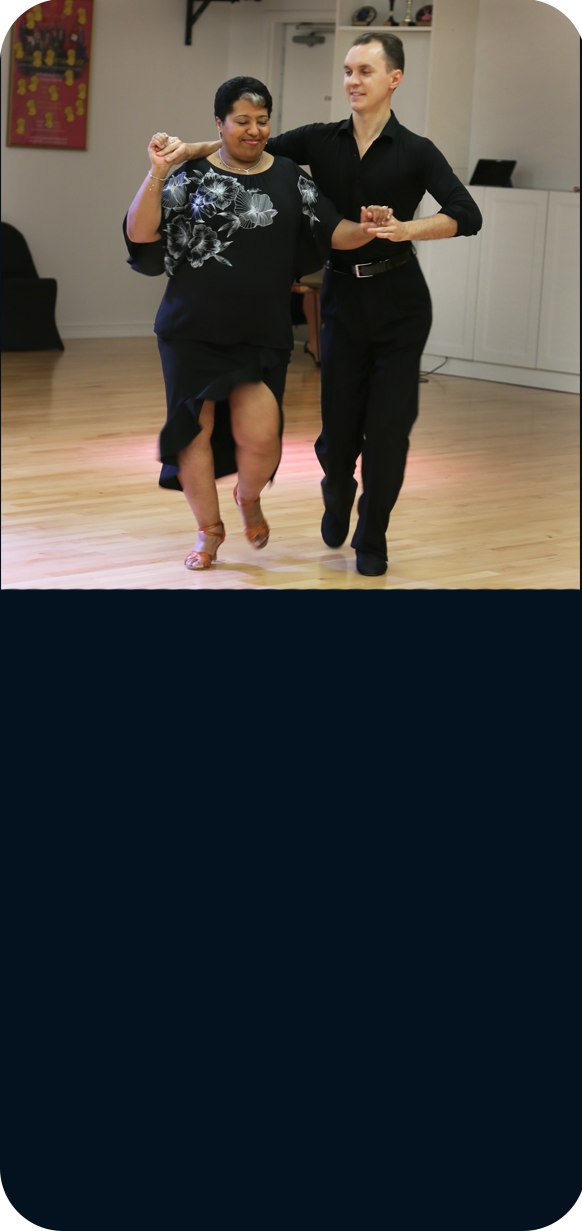
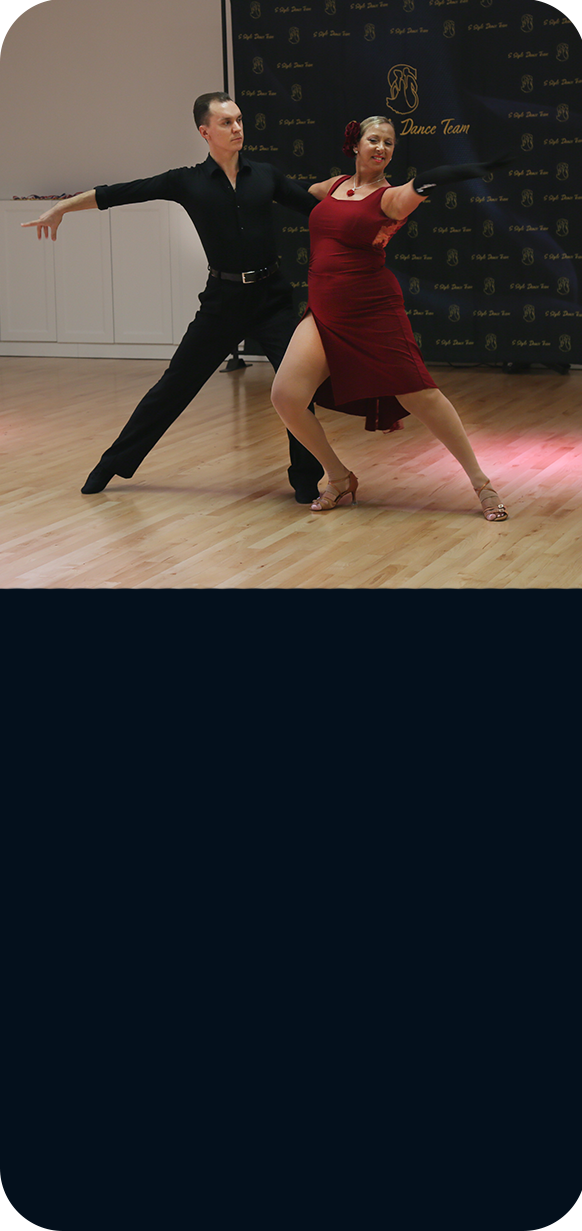
SOCIAL AND LATIN DANCES
The main purpose of social dancing is to meet new people, socialize, and have fun on the dance floor. This is a non-competitive style that focuses more on the leisure aspect of dancing. Social dancing implies dancing with different partners at parties and events, which places a special emphasis on connection between partners. Learning how to lead and follow is the main focus of the teaching process to allow students to enjoy dancing without having a pre-choreographed routine.
Salsa originated in Cuba and Puerto Rico as a mix of various dance and music styles. It is characterized by dynamic moves, fast turns, and active hip movement. Salsa is typically based on three counts.
Bachata is a sensual dance based on four-count tempo. It's characterized by active hip motion, body rolls, and elaborate footwork. Bachata is danced in a closer position as opposed to other social dances.
This is a fast Latin dance with the emphasis on hips. The upper body usually stays stable. Merengue has slower continuous turns and quite simple footwork. Generally merengue is danced in a closed position.
Hustle is a fun disco-style dance that gained popularity in the 1970s. It includes fast turns and spins. Lots of popular songs have rhythm and timing suitable for hustle, which makes it a great dance for nightclubs and parties.
Originated in Buenos Aires, this dance is characterized by sharp and precise footwork. It is performed in a closed position and implies strong connection between partners to allow for improvisation on the dance floor.
SALSA
BACHATA
MERENGUE
HUSTLE
ARGENTINE TANGO


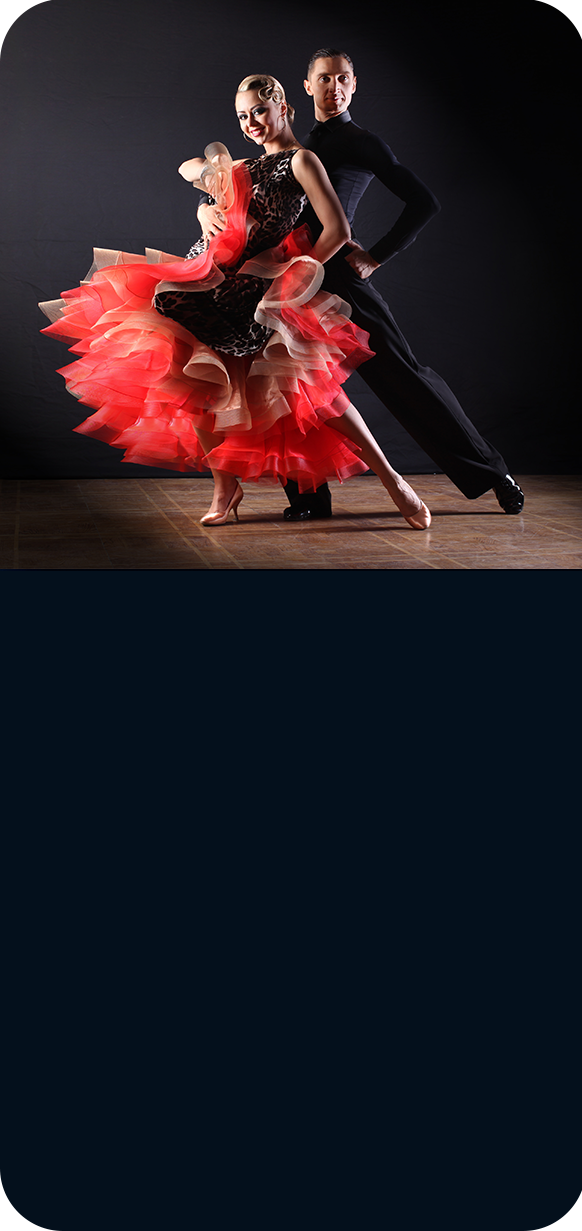
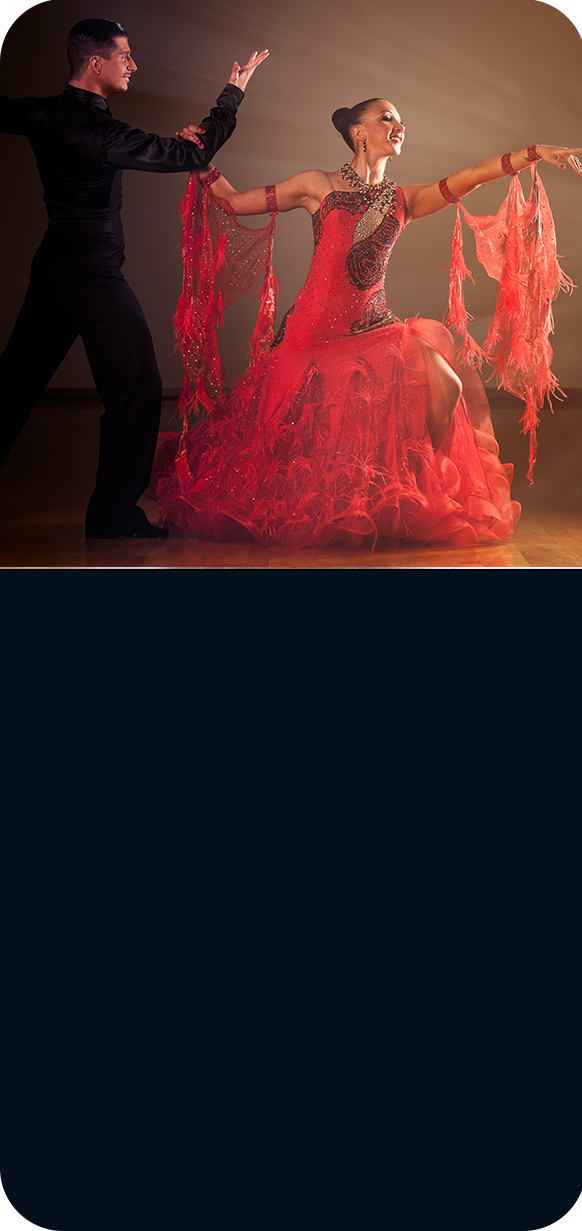
AMERICAN SMOOTH
American Smooth is a category of American Style ballroom dance. American Style developed in the 1950s in the United States. American Smooth is similar to the International Ballroom category, however, it has very significant differences that make it unique. Overall, American Smooth has more freedom in movement, allows open positions in dancing, includes a lot of arm styling, and open footwork. The music and rhythms may also vary.
Waltz is a slow and elegant dance, characterized by rise and fall foot technique. American Smooth waltz is based on International Ballroom waltz, but has more figures performed in open position, apart from the partner.
Tango is a passionate and dynamic dance originated in Argentina. Tango is performed in a closed position and characterized by strong and sharp movements, fast head turns, and precise footwork.
American Smooth foxtrot has a jazzy faster rhythm, which makes it very fun to dance. Partners often separate from each other and dance in open position, using a lot of elegant arm styling.
This is a classic dance, the oldest of all ballroom dances. It's dynamic and romantic, based on fast graceful turns. Viennese waltz is faster than regular waltz, but is also performed in a closed position.
WALTZ
TANGO
FOXTROT
VIENNESE WALTZ





AMERICAN RHYTHM
American Rhythm is a category of American Style ballroom dance. Similar to American Smooth, Rhythm developed in the 1950s. Rhythm closely resembles International Latin, but includes different dances that are not represented in Latin style. The main differences between Latin and Rhythm include: footwork, dance figures, and timing in some dances. Overall, American Rhythm consists of dynamic, sensual, and fast dances that are performed in open positions.
This dance is based on Cuban music. Cha Cha is characterized by sharp rhythmical movements, hip action, and elaborate footwork. Cha Cha music is fast and dynamic.
Rumba is a romantic dance with Cuban origins. It's characterized by soft continuous movements with strong emphasis on the hip action. American Style Rumba generally has a faster tempo than International Style.
This is a passionate and sensual dance, the slowest one in American Rhythm. It's characterized by wide open movements with extensive arm styling. Bolero is based on rise and fall technique, which makes the moves look long and smooth.
This is a fast dynamic dance that is performed to rock and boogie-woogie music. It's based on Lindy hop and was developed by ballroom dance studios in the 1940s. Swing is characterized by soft bouncy moves and swinging body action.
This is a fun dance of Cuban origins that is characterized by fast tempo, hip motion, lots of turns, and a staccato beat. Some figures are similar to Salsa, but the timing and footwork technique is different.
CHA CHA CHA
RUMBA
BOLERO
EAST COAST SWING
MAMBO
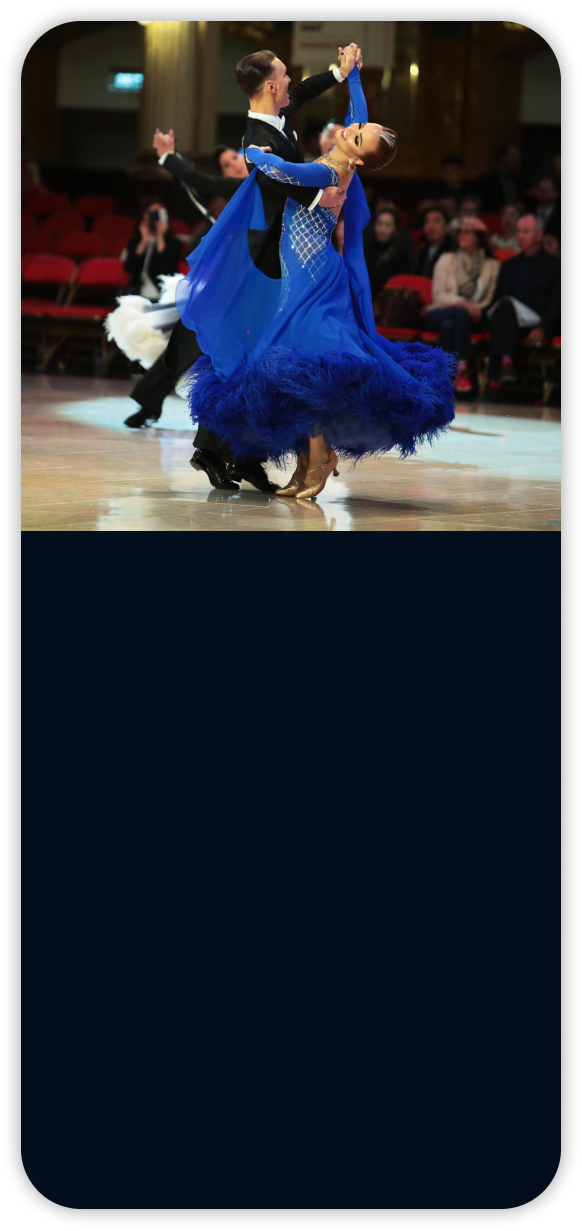
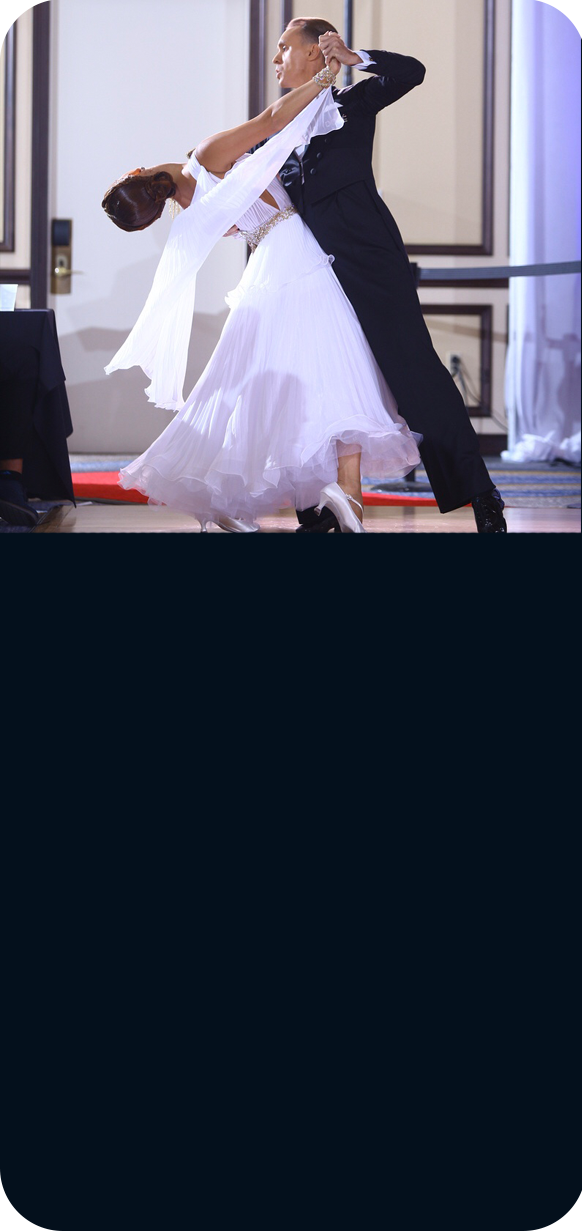
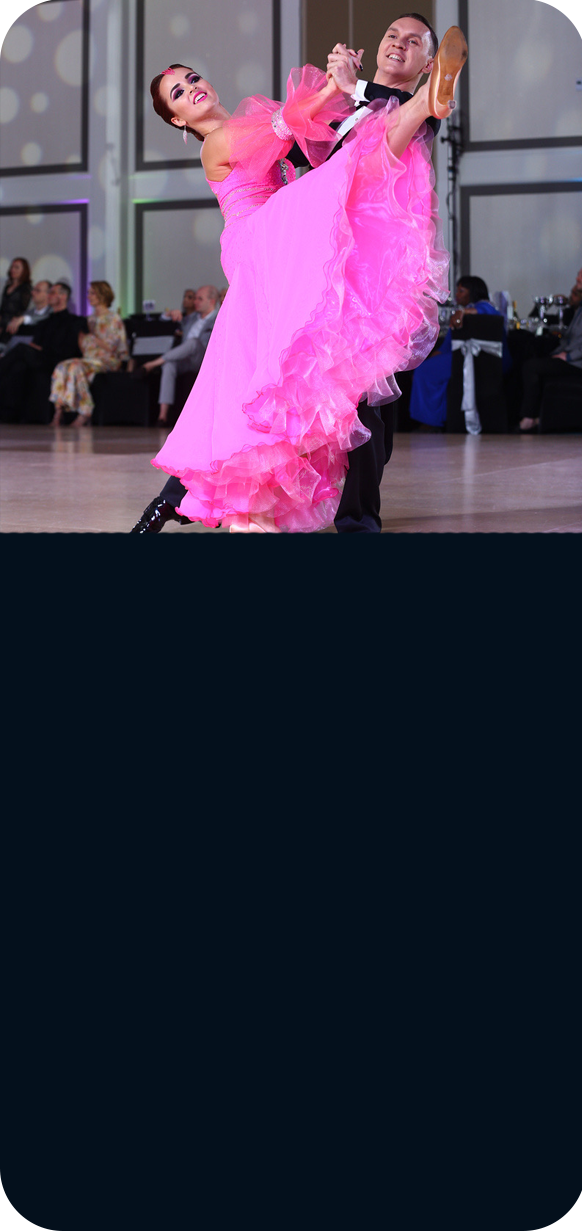


INTERNATIONAL BALLROOM
International ballroom style, or Standard, is dance style that encompasses five dances: Slow Waltz, Tango, Viennese Waltz, Slow Foxtrot, and Quickstep. International Ballroom dances are characterized by refined technique and grace. This style showcases the beauty and artistry of ballroom dancing.
Waltz is a graceful dance that originated in Eupore in the 19th century. Couples glide across the dance floor in closed position, applying rise and fall technique. It's known to its distinctive three-beat rhythm, which creates a romantic ambiance.
Tango is a passionate dramatic dance characterized by sharp staccato movements and precise technique. Couples dance in a closed position to maintain powerful connection. It's a thrilling and captivating dance to watch.
This is a fast-paced dance characterized by flowing movements and rapid spins. Viennese Waltz is performed in a closed frame; it requires precise footwork and impeccable timing. This is one of the most dynamic dances of International Ballroom style.
Slow Foxtrot is a sophisticated and classy dance that includes long movements creating sweeping turns and continuous progression around the dance floor. The music is typically in 4/4 time and is often set to classic and romantic tunes.
Quickstep is a unique and energetic dance that is characterized by playful skips and brisk movements. The choreography includes fast-paced footwork, kicks, and hops. The music is typically upbeat and swinging, often with a jazzy feel.
SLOW WALTZ
TANGO
VIENNESE WALTZ
SLOW FOXTROT
QUICKSTEP





INTERNATIONAL LATIN
International Latin is a vibrant dance style in Ballroom Dancing that consists of five dances: Cha Cha, Samba, Rumba, Paso Doble, and Jive. Latin dances characterize by rhythmic movements and expressive body actions. This style is known for its intensity, sensuality, and electrifying atmosphere it creates on the dance floor.
Cha Cha Cha is a fast dance with its origins in Cuba. The main traits are sharp accents, straight knees, and active hip motion. The dance exudes a sense of flirtatiousness and excitement.
Samba is a dynamic dance with Brazilian roots. Unique characteristic of Samba is "bounce" action that creates a distinctive rhythm. The movements are technical, fast, and sharp. It's rhythm captures Brazil's festive culture.
Widely known as the "dance of love", Rumba is a passionate and romantic dance. It emphasizes slow, fluid movements, intricate hand and arm gestures, and close connections between the dancers.
Inspired by the traditional Spanish bullfight, Paso Doble is a theatrical dance that tells a story of a matador and his cape. The dance features strong movements, dramatic poses that mimick the choreography of a bullfight.
Jive is a fast-paced energetic dance that takes influence from American swing and jazz. It's characterized by quick footwork, energetic kicks and flicks, and playful movements. Jive is usually set to rock-n-roll beats.
CHA CHA CHA
SAMBA
RUMBA
PASO DOBLE
JIVE
